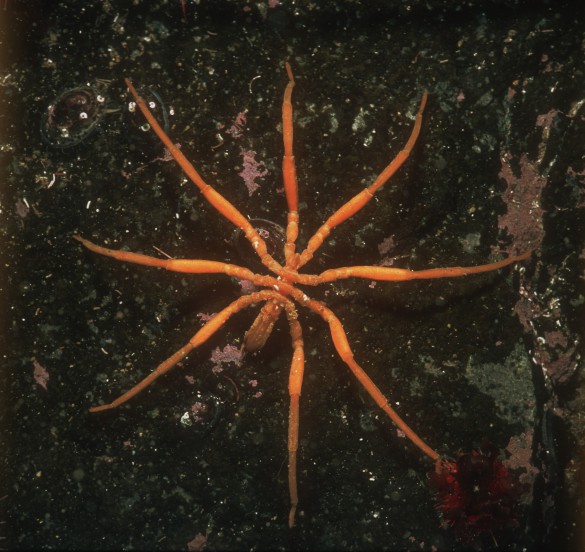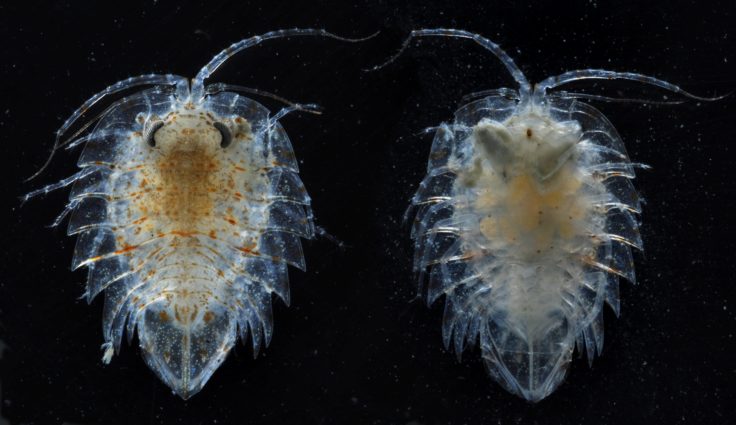NEWS STORY: Antarctic biodiversity highlighted
Antarctic life – highly diverse, unusually structured
A new assessment by scientists, published in Nature this week, suggests Antarctica is a more diverse and biologically rich region than previously thought.
The team of scientists, led by Monash University, along with colleagues from the British Antarctic Survey, University of Waikato in New Zealand, and Australian National University, looked at how recent investigations have revealed the continent and surrounding ocean is rich in species. They are also very highly diversified into a variety of distinct ecological regions that differ greatly from each other.
Lead author, Professor Steven Chown, School of Biological Sciences at Monash, said the team explicitly focussed on demonstrating the diversity of various areas of the Antarctic continent and Southern Ocean.
“Most people think of the continent as a vast, icy waste, and the sea as uniformly populated by whales, seals and penguins. But that’s simply not true,” he said.
“There’s much biodiversity on land, especially among the micro-organisms, such as bacteria, and the seafloor is very rich in larger unusual species, such as sea spiders and isopods (the marine equivalents of slaters or wood lice). More than 8000 species are known from the marine environment.”
Dr Ceridwen Fraser, co-author from the Australian National University.said: “Each area of the Antarctic also has very different groupings of species; while initially they may look the same, they are actually very different.”

The team also noted several unusual ways in which patterns of biodiversity are produced in the region. Geothermal, heated areas, such as volcanoes, have played an important role as refuges from icy, glacial conditions on land. At sea, wind has an especially significant effect on diversity. Windier areas have more seabird species.
“Most people think of the continent as a vast, icy waste, and the sea as uniformly populated by whales, seals and penguins. But that’s simply not true,” he said.
“There’s much biodiversity on land, especially among the micro-organisms, such as bacteria, and the seafloor is very rich in larger unusual species, such as sea spiders and isopods (the marine equivalents of slaters or wood lice). More than 8000 species are known from the marine environment.”
Dr Ceridwen Fraser, co-author from the Australian National University.said: “Each area of the Antarctic also has very different groupings of species; while initially they may look the same, they are actually very different.”
The team also noted several unusual ways in which patterns of biodiversity are produced in the region. Geothermal, heated areas, such as volcanoes, have played an important role as refuges from icy, glacial conditions on land. At sea, wind has an especially significant effect on diversity. Windier areas have more seabird species.
Professor Chown said: “Increasing wind speeds, associated with the ozone hole, have, quite unusually, improved conditions for wandering albatrosses, reducing their travel time and enabling them to become much heavier as adults.”
Professor Craig Cary, co-author from the University of Waikato, New Zealand, added: “Antarctica and the Southern Ocean have much more biodiversity, structured in more interesting ways than ever previously thought. Sub-glacial micro-organismal life provides an excellent example of a surprising recent discovery.”
Conservation
Professor Chown said the team also made a brief assessment of the conservation status of biodiversity in the region.
“We found that in some cases conservation measures are excellent, such as in the case of the prevention of invasive alien species,” Professor Chown said.
For others, work by the Antarctic Treaty Parties is still required. For example, the area covered by special protection on land (the equivalent of national parks), and by marine protected areas at sea, is still too small, when measured by global targets such as those of the Strategic Plan on Biodiversity 2011-2020.
The team drew particular attention to the need for comprehensive protection of the Ross Sea.
Professor Andrew Clarke, co-author from the British Antarctic Survey said: “This is one of the planet’s last, relatively intact, large marine ecosystems. It is unusual in this respect, and thus provides a suite of globally significant conservation benefits and scientific insights.”
The work reported in this paper is part of a larger, global effort to further understand the biodiversity of the Antarctic region, its conservation needs, and the science that will be needed to progress understanding in the area.
Professor Melodie McGeoch, co-author from Monash University said: “Ultimately, the region will require a dedicated plan for biodiversity conservation, similar to those being developed for most other regions of the planet. We think there’s plenty of appetite for developing it.”

Key findings from the review:
– The Antarctic has very distinct biogeographic regions, each with different groups of species; it’s not simply one homogeneous area.
– Terrestrial and marine diversity has relied on a variety of refugia (shelters), including geothermal refuges, while life has also persisted sub-glacially.
– Antarctic micro-organismal systems can be among the most diverse globally, but also highly specialised to arid, low nutrient conditions.
– There are good reasons to improve efforts to conserve biodiversity in the region.